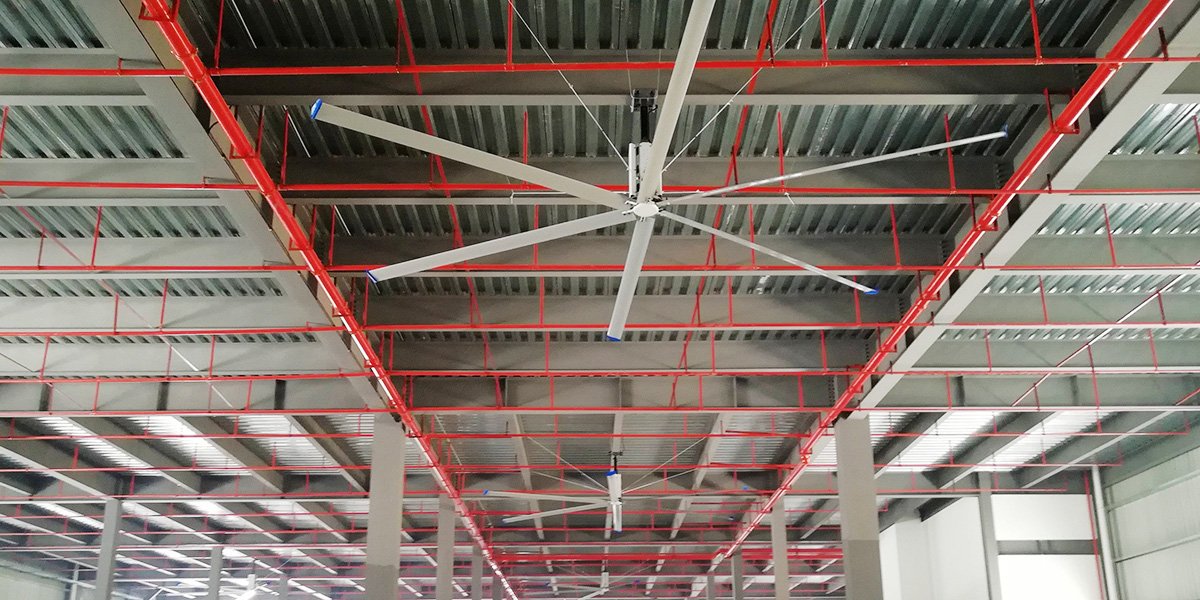
Calculating the usage space for a single or multiple HVLS (High Volume, Low Speed) ceiling-mounted fans involves considering the fan’s coverage area, the volume of the space, the air circulation requirements, and the specific conditions of the environment. Here are the factors to consider and a general procedure for the calculation:
Factors to Consider
- Fan Specifications: The diameter and design of the fan directly impact its coverage area. Larger fans typically cover a broader area.
- Space Volume: The dimensions of length, width, and height of the space determine how much air needs to be circulated or replaced.
- Air Circulation Requirements: Different usage spaces have varying requirements for the speed and frequency of air movement.
- Environmental Conditions: Temperature, humidity, pollution levels, and specific industrial environment needs will affect the choice and configuration of fans.
- Safety Standards: Ensure that the use of fans complies with local safety regulations and standards.
Calculation Steps
- Determine Fan Coverage Area: Start with the coverage area data provided by the fan manufacturer. Typically, larger fans can cover an area with a diameter one to two times the length of the fan.
- Calculate Space Volume: Measure or obtain the dimensions of the space (length, width, and height), and multiply them to get the total volume of the space.
- Assess Air Circulation Needs: Based on the purpose and environmental conditions of the space, determine how many times the air needs to be circulated per hour. For example, an industrial workshop may require more frequent air circulation to maintain air quality.
- Fan Quantity and Layout: Based on the coverage area and space volume, calculate the number of fans required. Also, consider the layout of the fans to ensure even and effective air movement.
- Safety and Efficiency Check: Ensure that the installation and use of the fans comply with safety standards and consider the energy efficiency ratio of the fans to achieve the best energy-saving effect.
Example
Suppose you have an industrial workshop with dimensions of 100 meters long, 50 meters wide, and 10 meters high. First, calculate the space volume as 100m x 50m x 10m = 50,000 cubic meters. If a HVLS fan can cover an area of 2,000 square meters, this workshop might require at least 3 fans (50,000 square meters / 2,000 square meters/fan ≈ 25, but considering edge effects, more might be needed).
Next, consider the air circulation needs. If the air needs to be circulated five times per hour, the total air volume required is 50,000 cubic meters x 5 = 250,000 cubic meters/hour. You need to ensure that the total airflow of the selected fans meets this requirement.
Finally, consider the layout of the fans to ensure even air movement with no dead spots. Also, ensure that the fan installation locations comply with safety regulations and can achieve the best ventilation effect.
Please note that the above calculation is an example by Air21xx, and the actual situation may be more complex, possibly requiring a professional HVAC (Heating, Ventilation, and Air Conditioning) engineer for precise calculations and design.
